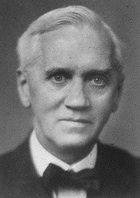More About Lysozyme

Discovered and named in 1921 by Nobel Prize winner, Sir Alexander Fleming (1881-1955, at right), who later discovered penicillin, lysozyme is a small, antibiotic enzyme that kills bacteria by attacking their protective cell walls. Because they have a relatively high internal osmotic pressure, bacteria build a tough polymer skin composed of sugars and short amino acid strands, called peptidoglycans. Lysozyme attacks and weakens these polymer walls, causing the cells to burst under their own pressure. Found in small, but effective amounts in organic raw milk from grass-fed cows, it's also present in saliva, tears, blood and egg whites- all places rich in potential nutrients for bacterial growth.

Lysozyme (right) is heat labile, meaning it is denatured and inactivated by heat such as that encountered in the pasteurization/homogenization processes, but remains a valuable defense against pathogenic contamination in unheated dairy products.
|